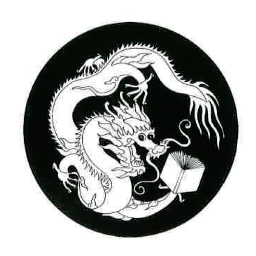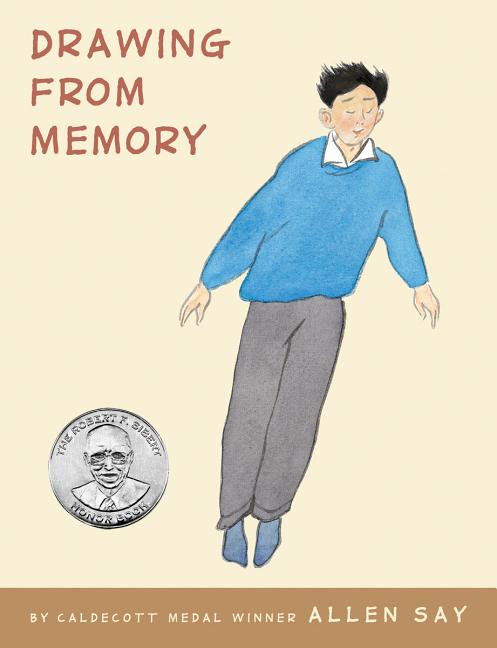
Book Resume
for Drawing from Memory by Allen Say
Professional book information and credentials for Drawing from Memory.
7 Professional Reviews (4 Starred)
6 Book Awards
Selected for 8 State/Province Lists
See full Book Resume
on TeachingBooks
Allen Say’s arresting autobiography focuses on his childhood, adolescence, ...read more
- School Library Journal:
- Grades 4 and up
- Booklist:
- Grades 4 - 7
- Kirkus:
- Ages 10 and up
- Publisher's Weekly:
- Ages 10 and up
- TeachingBooks:*
- Grades 5-12
- Word Count:
- 7,281
- Lexile Level:
- 560L
- ATOS Reading Level:
- 4.1
- Cultural Experience:
- Asian
- Genre:
- Biography
- Nonfiction
- Year Published:
- 2011
18 Subject Headings
The following 18 subject headings were determined by the U.S. Library of Congress and the Book Industry Study Group (BISAC) to reveal themes from the content of this book (Drawing from Memory).
- Illustrators--Japan--Biography--Juvenile literature
- Say, Allen--Cartoons and comics
- Japanese American artists--Cartoons and comics
- Japan
- Juvenile Nonfiction | Biography & Autobiography | Art
- Graphic novels
- Japanese American artists
- Illustrators--United States--Biography--Juvenile literature
- Say, Allen
- JUVENILE NONFICTION / People & Places / Other
- Say, Allen--Juvenile literature
- United States
- JUVENILE FICTION / Family / General (see also
- Juvenile Nonfiction | Comics & Graphic Novels | Biography
- Illustrators
- Children's Books/Ages 9-12 Biography
- Juvenile Nonfiction | People & Places | Asia
- Illustrators--Japan--Biography
7 Full Professional Reviews (4 Starred)
The following unabridged reviews are made available under license from their respective rights holders and publishers. Reviews may be used for educational purposes consistent with the fair use doctrine in your jurisdiction, and may not be reproduced or repurposed without permission from the rights holders.
Note: This section may include reviews for related titles (e.g., same author, series, or related edition).
From Cooperative Children's Book Center (CCBC)
Allen Say’s arresting autobiography focuses on his childhood, adolescence, and young adulthood in Japan, when his desire to be an artist was counter to his father’s expectations. After World Way II (details of which are notably restrained), Say lived with his grandmother and then, remarkably, in an apartment on his own in Tokyo at age twelve after he was accepted into a private art school. Reading about another young, aspiring artist in the newspaper, Say sought the teen out and ended up meeting not only the boy, Tokida, but his sensei, Noro Shinpei, a noted cartoonist, who became Say’s teacher, too. Say details the next three years spent apprenticing with Shinpei and attending art school, a phase of his life that draws to a close, like this book, as he prepares to depart for the United States at age fifteen. Say’s fascinating personal history unfolds through both the prose narrative and the many illustrations, including black-and-white drawings, cartoons, and photographs and full-color paintings and panel illustrations. An author’s note includes additional photographs accompanying a narrative in which Say writes more about his relationship with Shinpei, “this man who had become my spiritual father.” (Age 10 and older)
CCBC Choices 2012 © Cooperative Children's Book Center, Univ. of Wisconsin - Madison, 2012. Used with permission.
From Horn Book
January 1, 2012
This rendering of Say's adolescence--a coming-of-age story within the context of a long life and vocation--takes the form of an album, with text, photographs, drawings, and paintings. At the center of the book is Say's relationship with Noro Shinpei, a popular cartoonist who took Say on as an apprentice at thirteen. Throughout the volume, content is reinforced through canny artistic choices and harmonious design.
(Copyright 2012 by The Horn Book, Incorporated, Boston. All rights reserved.)
From School Library Journal
Starred review from September 1, 2011
Gr 4 Up-Say tells the story of how he became an artist through a vibrant blend of words and images. Beginning with his boyhood in World War II-era Japan, he traces his life-changing relationship with Noro Shinpei, an illustrious cartoonist who became his surrogate father figure and art mentor. Illustrations are richly detailed and infused with warmth. Exquisite use of light makes night scenes glow, and the mid-20th-century Tokyo setting is captured with vivid authenticity. A variety of media and artistic styles, including full-color paintings, black-and-white sketches, photographs, and comic-book panels, adds texture and depth to the narrative. Fans of the artist's work will take particular delight in seeing sketches from his student days. Simple, straightforward sentences and a conversational narration in combination with a wealth of images will appeal to aspiring artists and reluctant readers alike. This book covers much of the same material as Say's autobiographical novel, The Ink-Keeper's Apprentice (Harper & Row, 1979), but the lively mix of art and text will draw in a new generation and a slightly younger audience. The somewhat abrupt ending, with Say moving to the United States, may leave readers wishing for a more extended epilogue or sequel, but that is simply because his story is so engaging. Readers of all ages will be inspired by the young Say's drive and determination that set him on a successful career path.-Allison Tran, Mission Viejo Library, CA
Copyright 2011 School Library Journal, LLC Used with permission.
From Horn Book
Starred review from September 1, 2011
Covering roughly the same period as the artist's autobiographical novel The Ink-Keeper's Apprentice (rev. 6/79), this rendering of Say's adolescence takes the form of an album, with text, photographs, drawings, and paintings all enlisted to convey events. At the center of the book, as before, is Say's relationship with his sensei, Noro Shinpei, a popular cartoonist in postwar Japan who took Say on as an apprentice when the boy was only thirteen. Say includes several of his teacher's cartoons in this book, which is harmoniously designed to allow the great variety of images room to work together without crowding. For example, in a sequence illustrating the riot in which Say and fellow student Tokida find themselves, a tidy ink-and-watercolor sketch of the orderly student demonstration is followed by an ominous painting, all blacks and grays, of the waiting police, with a concluding gestural ink sketch of the clash between the two groups. Throughout, you can see canny artistic choices being made -- color here, monochrome there, a cartoon, a snapshot -- that reinforce content with appropriate form. Where The Ink-Keeper's Apprentice was an intense and often gritty portrait of an awakening artist, Drawing from Memory is more discreet and rather more recollected in tranquility, placing a coming-of-age story within the context of a long life and vocation. roger sutton
(Copyright 2011 by The Horn Book, Incorporated, Boston. All rights reserved.)
From Booklist
Starred review from August 1, 2011
Grades 4-7 *Starred Review* Say, a Caldecott Medalwinning picture-book creator, returns to his most fertile groundtrue lifeto tell the story of how he became an artist. He began living alone when he was 12, paying a little attention to schoolwork and a lot of attention to drawing, a pursuit that flourished under the mentorship of his favorite cartoonist, Noro Shinpei. His narrative is fascinating, winding through formative early-teen experiences in Japan as he honed his skills and opened his eyes to the greater world around him. This heavily illustrated autobiography features Say's characteristically strong artwork. The visually stunning sequences include a standout scene in which the young artist and a friend stumble upon a massive demonstration, which is depicted as a huge crowd of people that snakes down one page and is stopped short by a brick wall of police on the next. The scrapbook format features photographs, many of them dim with age; sketchbook drawings; and unordered, comic-book-style panels that float around wide swathes of text and unboxed captions, and the overall effect is sometimes disjointed. Still, as a portrait of a young artist, this is a powerful title that is both culturally and personally resonant.(Reprinted with permission of Booklist, copyright 2011, American Library Association.)
From Kirkus
Starred review from July 15, 2011
Exquisite drawings, paintings, comics and photographs balance each other perfectly as they illustrate Say's childhood path to becoming an artist.
Although its story overlaps with The Ink-Keeper's Apprentice (1979), this visual chronicle is a fresh new wonder. It opens with a soft watercolor map of Japan on the left, framed in a rectangle, while on the right is a delicate, full-bleed watercolor of Yokohama's seashore and fishing village, with two black-and-white photographs pasted on: Say as a child, and the stone beach wall. The early arc takes readers from Say's 1937 birth, through family moves to escape 1941 bombings and then Say's nigh-emancipation at age 12, when his mother supported him in his own Tokyo apartment. The one-room apartment "was for me to study in, but studying was far from my mind... this was going to be my art studio!" The art table's drawer handle resembles a smile. Happily apprenticing with famous cartoonist Noro Shinpei, Say works dedicatedly on comic panels, still-lifes and life drawing. Nothing—not political unrest, not U.S. occupation, not paternal disapproval—derails his singular goal of becoming a cartoonist. Shinpei's original comics are reproduced here, harmonizing with Say's own art from that time and the graphic-novel–style panels, drawings and paintings created for this book.
Aesthetically superb; this will fascinate comics readers and budding artists while creating new Say fans. (author's note) (Graphic memoir. 10 & up)(COPYRIGHT (2011) KIRKUS REVIEWS/NIELSEN BUSINESS MEDIA, INC. ALL RIGHTS RESERVED.)
From Publisher's Weekly
June 20, 2011
Retooling some of the material in his autobiographical middle-grade novel The Ink-Keeper's Apprentice (1994), Say tells the story of his decidedly nontraditional Japanese upbringing, supplying watercolors, photographs, and humorous sketches to create a vivid record of life in postwar Tokyo. Say's family rented him his own apartment when he was 12 so he could
attend a better school. "The one-room apartment was for me to study in," he writes, beneath a b&w sketch of his desk, "but studying was far from my mind... this was going to be my art studio!" (A second drawing, in color, shows his conception of the perfect desk, covered with paints and brushes.) Japan's most famous cartoonist, Noro Shinpei, accepted Say as an apprentice until Say immigrated to the United States in 1953. Say's account of his relationship with Noro (who later called Say "the treasure of my life") is the centerpiece of the narrative. As the story of a young artist's coming of age, Say's account is complex, poignant, and unfailingly honest. Say's fansâ€"and those who also feel the pull of the artist's lifeâ€"will be captivated. Ages 10â€"up.
6 Book Awards & Distinctions
Drawing from Memory was recognized by committees of professional librarians and educators for the following book awards and distinctions.
 ALSC Notable Children's Books, 1995-2025, Commended, 2012
ALSC Notable Children's Books, 1995-2025, Commended, 2012
 CCBC Choices, Selection, 2012
CCBC Choices, Selection, 2012
 Notable Books for a Global Society, 1996-2024, Selection, 2012
Notable Books for a Global Society, 1996-2024, Selection, 2012
 Robert F. Sibert Informational Book Medal, 2001-2025, Honor, 2012
Robert F. Sibert Informational Book Medal, 2001-2025, Honor, 2012
 Horn Book Fanfare, 2001-2024, Selection, 2011
Horn Book Fanfare, 2001-2024, Selection, 2011
 SLJ Best Books of the Year, 2010 - 2024, Selection, 2011
SLJ Best Books of the Year, 2010 - 2024, Selection, 2011
8 Selections for State & Provincial Recommended Reading Lists
Drawing from Memory was selected by educational and library professionals to be included on the following state/provincial reading lists.
United States Lists (8)
California
Kansas
- William Allen White Award, 2013-2014, Grades 6-8
New Jersey
- Garden State Children's Book Awards, 2014 -- Non-fiction
Pennsylvania
- KSRA Young Adult Book Award, 2012-2013 -- Middle School List
Vermont
- Dorothy Canfield Fisher Children's Book Award, 2012-2013, Grades 4-8
Wisconsin
- 2012-13 Read On Wisconsin Book Club, Grades 6-8
- 2012-2013 Read On Wisconsin Book Club, Grades PK-12
- Read On Wisconsin Book Club Selections for Dec. 2012
Primary Source Statement on Creating Drawing from Memory
Allen Say on creating Drawing from Memory:
This primary source recording with Allen Say was created to provide readers insights directly from the book's creator into the backstory and making of this book.
Listen to this recording on TeachingBooks
Citation: Say, Allen. "Meet-the-Author Recording | Drawing from Memory." TeachingBooks, https://lib.teachingbooks.net/bookResume/t/26101. Accessed 03 February, 2025.
Preview Digital Book
Explore Drawing from Memory on Marketplace. Access requires OverDrive Marketplace login.
This Book Resume for Drawing from Memory is compiled from TeachingBooks, a library of professional resources about children's and young adult books. This page may be shared for educational purposes and must include copyright information. Reviews are made available under license from their respective rights holders and publishers.
*Grade levels are determined by certified librarians utilizing editorial reviews and additional materials. Relevant age ranges vary depending on the learner, the setting, and the intended purpose of a book.
Retrieved from TeachingBooks on February 03, 2025. © 2001-2025 TeachingBooks.net, LLC. All rights reserved by rights holders.







